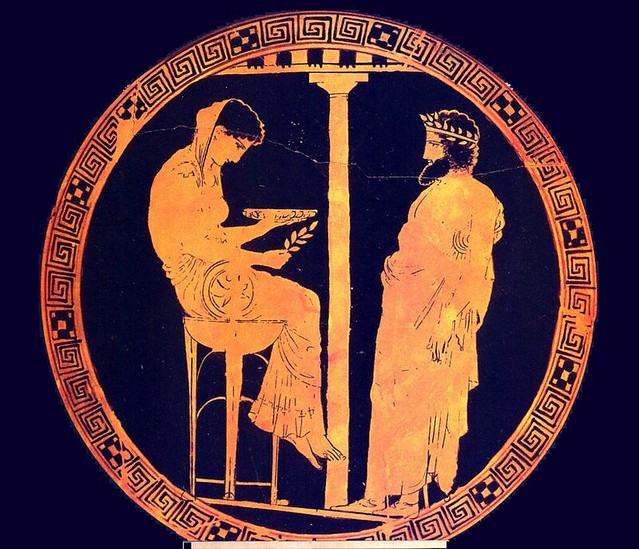Before I continue my journey through Jung’s Red Book, I would like to draw your attention to an excellent essay by Lance S. Owens, The Hermeneutics of Vision: C.G. Jung and Liber Novus. You can download it here along with other interesting materials available at gnosis.org here.
Below you can find a collection of crucial excerpts from the above-mentioned essay. I hope this will help you to situate The Black Books (published last year) and The Red Book chronologically as well as gain an insight into Jung’s unique hermeneutic method. It all started for Jung on 12 November 1913, when his soul called to him, which resulted in him starting to chronicle his inner experience in a black notebook.
I. “First, there were six sequentially dated journals, known as the “black books,” which he began this night in November of 1913 and continued through the early 1920s. These journals might be best described as his primary and contemporaneous ledger of a voyage of discovery into imaginative and visionary reality, what he termed ‘my most difficult experiment.’ By 1915, as the magnitude of his experience penetrated him, he felt the need for a more formal and elaborate recording of the visions. With great artistic craft—employing antique illuminated calligraphic text and stunning artwork— Jung labored for sixteen years translating the primary record of his experience from the black books into an elegant folio-sized leather-bound volume: this is the famous but long-sequestered Red Book. Jung titled it Liber Novus, ‘The New Book.'”

II. “The key is immersion and involvement in the mythopoetic imagination:
grasping the independent reality of imaginal voice and vision, and
participating with it. I do not say ‘granting reality’ to the experience—
that would imply the sovereignty of the granting observer. The shattering
fact that Jung knew is that the ego sacrificed all sovereignty in the experience. The demiurge was deposed: daylight consciousness was not the sole creator of the real.”
III. “From the very beginning of his journey in November 1913, Jung struggled with an interpretive task: translating his imaginative encounters—his visions—into words. … Now he needed to give this experience firm form. This was an intensely focused and deeply considered interpretive process.”
IV. “I have mentioned very briefly two aspects of Jung’s approach to the interpretation of his experience —how he worked the stone in his roles as physician and as scientist. But there is another vital and complex issue that must be considered: Jung had received a revelation. …
He faces not only the hermeneutics of a vision, but of himself as hermeneut.”
V. “Behind the word ‘hermeneut’ resided a mythic and symbolic history
of meaning. Jung knew it. Hermes was the interpreter of the words of the
Gods to Men, the mercurial messenger imaged in his planetary aspect: a tiny
celestial luminosity visible only occasionally in twilight hours between
light and dark, on swift journey between the gates of the sun and the land
of human dreams.”
VI. “… [A] mysterious mode of interpretation was mentioned in medieval commentaries. It was called anagoge. Its methods remained perpetually vague in many centuries of commentary. The Greek word itself means to lift up, or elevate. Hermeneutics in the anagogical mode cleaves all other approaches with a vertical axis: it reads mystical meanings. Here the hermeneut directly bridged above and below, thus witnessing the visionary fact veiled by words.
Jung traveled that high way—the vertical axis—the ancient road of
Hermes. Understood symbolically, in image of the hermeneut, he stood as
nexus between inner and outer, hidden and seen, above and below, Gods
and Men.”VII. “Only those who had traveled the inner world, and been wayfaring men, could clearly recognize these ancient maps for what they were. To explain what he saw, he had to help others take the journey into psychic reality.”













Perfect material for one who is Mercury ruled. 🙂
LikeLiked by 1 person
True 😊😊😊
LikeLike
Grateful Thanks, dearest Monika 🙏💖🙏💖💖💖🙏😘
LikeLiked by 1 person